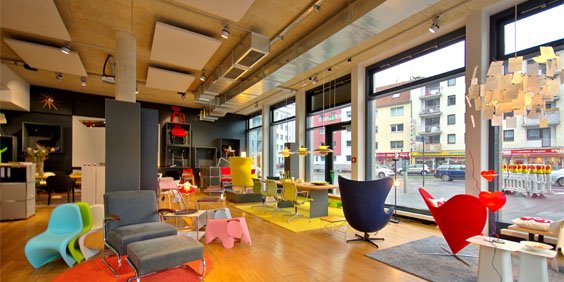Seating for events and conferences
Seating solutions for meetings, functions and events

Seating arrangements, room size, design – Planning the right seating
As a rule, seating is often used for events and frequently set up and taken down again. Accordingly, the chairs should be robust and at the same time have the lowest possible weight - for example on account of a particularly high aluminium content. The possibilities in terms of design and material are diverse. Conference chairs should not only be ergonomically sensible, but also fit the purpose of an event and the appearance of a room. In addition to the event chairs themselves, the choice of seating arrangement is of great importance. The size of the room and the number of participants must always be carefully considered. In addition, you should think about where the stage or screens and projectors are, whether all participants have a good view, whether the sound system is designed for all seats, whether tables are required or whether there is a translation booth in the room.


Row seating with conference chairs
Institutions with spacious halls for conferences or lectures with a large audience usually use row seating. Conference chairs of identical construction are suitable for this purpose, ideally those that can be hooked into one another and stacked. Although such as often classic four-legged chairs, there are now also cantilever chairs that can be stacked. Fixed row seating ensures order in the room and prevents participants from disrupting the seating, for example while walking through the rows or looking for a free seat. Stackable conference chairs are advantageous if they are to be stored when not required, or if you want to convert and/or create space during the event. Folding conference chairs are also an alternative.

Theatre seating and parliamentary seating
In terms of seating arrangement, there are various possibilities. Depending on the event type, hall and number of participants, different seating arrangements make sense. Theater seating is one of the most common forms: rows of off-set chairs are arranged in one direction without the provision of tables. This version is often used for information events or product presentations. So-called parliamentary seating is similar to the row seating, but with tables, an arrangement which is particularly useful for meetings and conferences. The U-shape is particularly popular in meetings and discussion groups with a relatively large number of participants. Here, tables are arranged in a U-shape and then, depending on requirements, seating on one or both sides.

Meeting venue regulation – The most important facts at a glance
When hosting seating events not only the comfort of the participants and the purpose of the event have to be considered, but also a number of legal regulations. In Germany event organisers must, according to § 120 VStättVO, and in consultation with the responsible caretaker of the place of assembly, adhere to the seating plans approved by the local building authorities. In addition:
- When planning an event, ensure the selected chair type allows the expected participant numbers to be accommodated in accordance with the regulations.
- If the visitors are seated at tables, a maximum of one person per square meter is permissible, with seats in rows or standing room this rises to two people per square meter.
- Seats arranged in rows must be fixed immovably. If chairs are only set up temporarily, they must be firmly connected within the individual rows.
- Seats must be at least 0.5 m wide and there must be a passage width of 0.4 m between the rows of seats.
- For large events, seats must be arranged in blocks of a maximum of 30 rows of seats and that there must be aisles of at least 1.20 m wide behind and between these blocks. These aisles must be arranged so that they lead as directly as possible to the exits.
- At events in halls, up to 20 seats may be arranged between the side aisles, and up to 40 seats at outdoor meeting places.
- Where tables are to be used, the distance from any given table seat to one of the aisles must not be more than 10 m, and the distance between the individual tables should be at least 1.50 m.
- It is also important that at least 1 % of the visitor seats, but a total of at least two seats, are designed for wheelchair users and that they are on level stand space. These must also be assigned visitor places for accompanying persons. The places for wheelchair users and the routes to them must be clearly marked with information signs.
- Equally importantly according to §§ 3 and 24 of the VStättVO, escape routes, emergency exits and exits are to be kept free of obstructing objects at all times and must be easy to open from the inside with a single handle.














